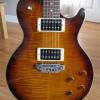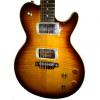Search the Community
Showing results for tags 'string'.
-
Clang tone, a.k.a. plink tone, a subtle ringing pitched sound caused by the longitudinal wave travelling along the string, is a phenomenon inherent to all vibrating tensioned strings. Piezos and microphones can pick up clang tone, but magnetic pickups will not. Variables that may exacerbate clang tone include: · Piezo saddles that are not properly seated · Playing techniques · High-gain amps or high-gain amp model usage · The strings themselves · The individual composition of the guitar · The setup of the guitar or any combination of these contributors. As such, there is no one-size-fits-all way to address the clang tone phenomenon. With Variax being a piezo-based guitar, we've built filters into the firmware to address clang tone. We have recently reviewed these filters and have come to the conclusion that they are already optimized, and further adjustments to the filters would not be beneficial. Each case of clang tone is unique, so we cannot guarantee that any or all of the actions below, when performed by Line 6-authorized service technicians or a luthier, will result in addressing clang tone: · Running the latest firmware (v2.22 or newer) · Replacing strings · Using at least a .010 gauge string set. · Cleaning out the cutout in the saddle where the piezo element sits (use pot/fader cleaner, not WD40) · Replacing piezos (available at www.FullCompass.com, part number 11-00-0010) If none of these actions resolve the issue, please contact Line 6 support at www.Line6.com/support, detailing your actions taken, if any.
-
Hi folks! I've recently started using my Variax Standard for a 60s tribute band, and a few weeks ago I had a string break at the bridge (4th). Today the same thing happened at exactly the same spot. There's no rough or sharp point at the saddle, so, has anyone got any ideas? I've just restrung with Elixirs. Is this a common thing with Standards? I sweat a fair bit so is it my sweat causing the string to fail? Chris - Nottingham, UK
-
Afternoon all; I have a fairly new JTV-89F that has a D string that is much quieter than the other strings. All the strings ring out clearly via the magnetic pickups, but the D string is considerably quieter than the rest through the piezo. The problem exists whether I'm connected via the Line 6 digital interface cable or via a regular 1/4 inch jack. I have verified the issue is also present on two different rigs. Firstly on an old Marshall VS65R amp with no pedals, and also on my new Line 6 DT50 with an HD500. I have tried changing the strings and reseating them several times without any sucess. I have also upgraded to all the latest revisions of the Line 6 Monkey and all of the other associated software/firmware/drivers. I believe doing so does the equivalent of a factory reset on the guitar. I found a settings box in the workbench software that appears to show the individual string gain, and they were all set to 0 dB too. I can't imagine how the settings would have been anything other than the defaults, since I really haven't had a lot of time to dink around with this gear since I got it. Any ideas what I can try to get my D string to normal? Thanks.
-
Hi everyone I'm new to both: Helix and the world of IRs (and even the english language - I hope you guys understand me) :) I've been reading for hours now, and as far as I understand the topic, it should be possible to make my acoustic guitar sound (more or less) like a bass guitar. For now I'm using an octaver and lots of EQing, but I think IRs should be a much better way (if they can make electrics sound like acoustics...) And then a kind of "ambient-orchestra-strings" sound would be great as well. And again I'm hoping to achieve that with IRs (at the moment tons of delay, chorus... is doing the job). So at the bottom line I have 2 questions: a.) Can I do that? b.) Where do I find suitable IRs (Bass & Orchestra/Violins...). Free ones would be nice to try, but basically it's not a problem if they cost a view bugs. What I found for myself is 3 SIGMA. Looks very promising. Thanks a lot!!! chris
-
I own a Variax Bass and I gig with it regularly, at least once a week. My problem is, the dynamics of the A string and G string seem reduced while i play. I've tried using my EQ to boost the dynamics of these strings but that also increases the other two strings. Can anyone help me before I contact Line 6?
-
I've had a JTV59 for about 3 months, and I noticed that almost all the models have very quiet E, A, and D strings, while the G, B, and E are much louder. The B is the loudest, but that is typical of many guitars I've played. The problem is my higher treble notes drown out the deeper bass notes. Is this due to variations in the piezo pickup sensitivity in the bridge? The magnetic humbuckers don't suffer from this problem. This is what I've tried to correct the problem, and it helps a lot. In Workbench, I went through the models one by one and picked each string from low E to high E, listening for which strings were louder and by how much. Then I turn the individual string volume of loud strings down to between 60 and 80, depending on what sounds good with each model. Lastly, I raise the overall model volume by 2 to 5 db, to bring all the strings up to a good volume. The E, A, D strings still sound less expressive, less detail in the tone, but at least the volume is not completely drowned out by the treble strings. If the problem is the piezo, I imagine a replacement is expensive. I also noticed that raising the the overall db level on the Spank models actually helped them sound better, to me at least.
-
Some people have reported that after a JTV flash upgrade usually to v2.0 or v2.1, that the B and E strings have very low volume levels in comparison to the E,A,B,G strings on some models. Some have reported that a subsequent reflash or two fixed the problem, and others that they had to roll back to v1.9 to obtain models that had balanced string volumes, and finally some dived in to Workbench HD and tweaked the affected models to balance out the string sounds. I recently hit this issue when I upgraded to v2.1 and a subsequent reflash did not fix it, and as I had a gig coming up I had to roll back to v1.9 as a quick way to get back to balanced string volumes as I did not have the time to go in WB HD and manually adjust for the differences. I think It would be very useful to find out why this problem occurs and why it only affects some users and hopefully Line 6 can then fix the problem. So if we can gather plenty of useful data in this thread then we can pass it on to Line 6 to investigate. Please answer the following questions: if you have you ever had E and B strings at very low volume immediately following a flash upgrade? (a) what flash version were you upgrading from and to? ( B) what model JTV were you updating? © were you updating directly via JTV dongle or indirectly through an HD500 or HD500X or other device? (d) how did you fix the problem? (i) reflash firmware? How many times? (ii) tweaked string volumes global and models in Wokbench HD? (iii) roll back to v1.9 or another fw level? (e) have you ever experienced this problem on a fw release earlier than v2.0 and if so, what level was it? (f) which models had the problem? My answers: (a) v1.9 to v2.1 ( B) JTV59 © updated via HD500 (d) attempted 2 reflashes, but then rolled back to v1.9 (e) no (f) T-MOD positions 1,3,5 and SPANK 1 though 5 Thanks in advance for your help and answers.
-
Hello Recently I got a POD HD300 and I can't seem to get ahold of a decent tone for my 6string baritone tuned to Drop E. It's really muddy and undefined,I want a more digital tone,similar to Meshuggah-Tony Danza Tap Dance Extravaganza-Periphery etc. I have a .85 for a low E with on a 27,2'' with an EMG 81. A good example of what I'm after(or similar) is this https://soundcloud.com/thelivingdoorway/frederipoff-thordendal Any preset/info will be gladly appreciated. Thanks a ton and happy new year John
-
Hi! Did anyone else ever get problems with stings breaking on the saddles of a JTV 59? Mine use to, what is really annoying. I already tried pulling an old bass string over the saddles to get rid of burrs. Is it normal that the strings dig a visible sluice into the saddles? Would you dare to carefully grind on the saddles with the piezos underneath? Thank you and best regards





